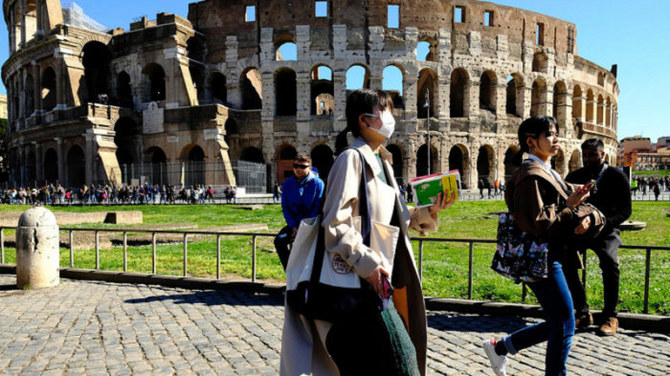
The first Global Tourism Resilience Day was marked on Feb. 17, as recommended by the UN General Assembly. A resolution proclaiming the day was passed unanimously 11 days earlier amid global calls for the international community to help develop resilience in an industry that was crippled in an unprecedented manner during the COVID-19 pandemic.
Certainly, the pandemic did not spare any sector, with the exception perhaps of technology and healthcare, which boomed while the rest of the global economy went into a downward spiral. From manufacturing to education and agriculture, every key economic activity was brought to a standstill during the pandemic, thanks to the lockdowns that ranged in duration from a few weeks to several months.
However, while most sectors began recovering once the lockdowns were lifted, tourism remained blocked, hit by the innumerable and complex restrictions that were placed on travel, domestically as well as internationally, all over the world. While some countries, notably in the Middle East and Europe, opened up fairly quickly, many countries like India, China, Japan and South Korea — which are among the biggest source markets for many tourism destinations — remained closed for many more months. China has only recently reopened its international frontiers.
Another characteristic that sets tourism apart from almost all other economic activities is that, unlike other sectors, it is not concentrated in just a few areas, but is rather dispersed all over, touching small and remote rural areas as much as large metropolitan areas. Tourism is also perhaps the greatest leveler, as it offers job opportunities to millions of unskilled or partly skilled workers, many of whom lack formal education. Thus, in many ways, it is critical for the most underprivileged segments of society. Before the pandemic brought tourism to its knees, the industry was said to be worth $9.7 trillion worldwide and employed close to 500 million people.
The UN’s World Tourism Organization has stated that, in 2021 alone, the global tourism industry lost about $2 trillion due to the pandemic. The final cost of COVID-19 will perhaps be many times greater.
Three years after the world was brought to a standstill, there are many areas, especially the most vulnerable and poor parts of the planet, where tourism is still limping toward recovery, with figures far below those of 2019. Tens of millions, if not more, remain out of work and millions of small enterprises that employed them have shut for good.
Tens of millions, if not more, remain out of work and millions of small enterprises that employed them have shut for good.
Ranvir S. Nayar
Thus, Global Tourism Resilience Day was a reminder that the world needs to step up and do its bit to help. This is not just about reviving the travel and tourism industry, but also taking it beyond, as tourism can be a key player in promoting sustainable development.
Done properly and with adequate measures, tourism can be one of the most sustainable, decentralized and community-led activities, which empowers the weakest and spreads wealth across all segments. At a time when the world is dealing with challenges around sustainable development, tourism could be one of the sectors that provides the answers global leaders say they are desperately looking for.
Indeed, the UN acknowledges the important role that tourism can play in promoting sustainable development, as it connects people with nature. Sustainable tourism has the unique ability to spur environmental responsibility and conservation. It is also perhaps the single most important tool that can be used by the world as it races toward meeting the UN Sustainable Development Goals, which appear to be further and further out of reach. As tourism is a cross-cutting activity, it can help achieve multiple SDGs, such as fostering economic growth, alleviating poverty, creating full and productive employment, and decent work for all. It can also drive the world toward sustainable tourism and help reduce inequality, which has increased dramatically since the outbreak of the pandemic.
But getting tourism back on its feet in the places where it is still struggling requires more than just words. It needs global assistance of all kinds, but especially monetary. Thus, it was welcome that, on the first Global Tourism Resilience Day, host nation Jamaica recommended the establishment of a Global Tourism Resilience Fund, which would not only help in getting the worst-hit areas back on their feet, but also provide assistance in case of future shocks. These are increasingly likely, mainly due to climate change, as the number of extreme weather events has risen sharply across the world, shutting tourism down for weeks, if not more. The fund is meant to provide support to individual destinations in times of crisis and disaster, and also to guarantee the sustainability of international travel and tourism.
But it is not just money. The tourism industry also needs to build its capacity to predict, mitigate and manage disruptions when they arise, recover quickly and thrive thereafter, as the resolution passed in Jamaica says. While the rich governments can pay for part of the fund, even individual travelers can pitch in with a small contribution to the fund every time they travel. Together, the world can help bring tourism not just back to 2019 levels, but also ensure that it grows sustainably and rapidly into the future.
• Ranvir S. Nayar is managing editor of Media India Group.












